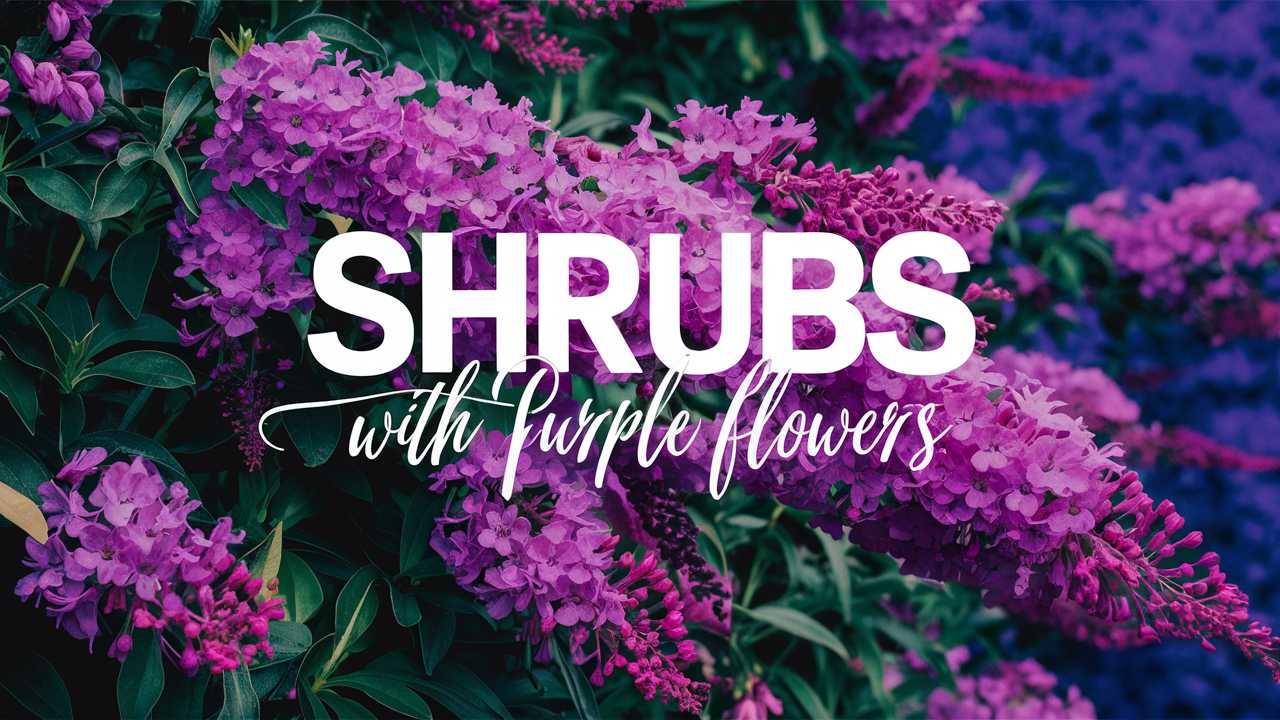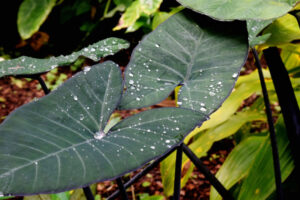This guide will explore a selection of stunning purple flowering shrubs that can elevate your garden’s aesthetic appeal.
Purple Azaleas

Azaleas are often the stars of spring gardens, creating a breathtaking display of purples and lavenders. These evergreen or deciduous shrubs belong to the Rhododendron family and are renowned for their captivating trumpet-shaped flowers. Typically, azaleas bloom for two to three weeks, with their flowers enhancing the garden’s beauty. They prefer partial shade and well-draining acid soils, making them an excellent choice for woodland gardens or areas with dappled sunlight.
Azaleas come in numerous cultivars, ensuring a variety of hues from soft lavender to vivid purple. These shrubs grow well alongside other shade-loving perennials, and their dense foliage offers habitat for birds, enhancing your garden’s ecological value. Whether planted in groupings or as focal points, azaleas bring dramatic color to the spring landscape.
Butterfly Bush
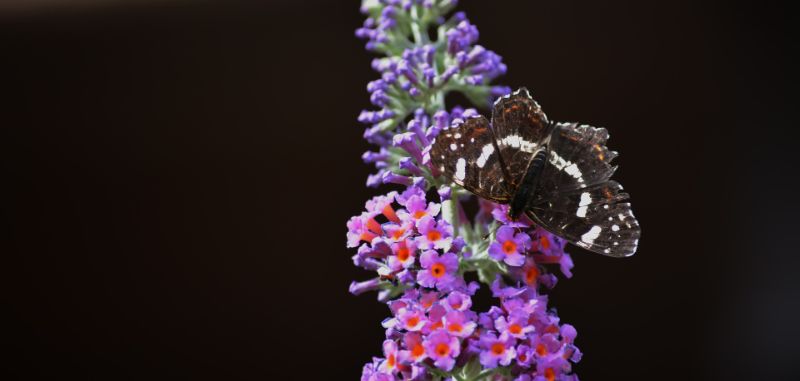
As the name suggests, Butterfly Bush (Buddleja davidii) is a magnet for butterflies, making it an excellent addition to a wildlife garden. Known for its long panicles of purple flowers, this shrub can grow quite large, reaching heights of up to 10 feet. They are not only visually striking but also provide nectar to a variety of pollinators, creating an ecosystem-friendly environment.
Butterfly Bush thrives in full sun and well-drained soil, showcasing its blooms from summer through frost. Cutting back this shrub in late winter encourages new growth and more abundant flowers. While it can be an aggressive grower, with proper management, it can flourish in mixed borders or as a standout in a perennial bed.
Bush Clover
Bush Clover, or Lespedeza thunbergii, is a lesser-known purple flowering shrub that deserves more attention. It produces cascading spikes of lavender flowers that create a soft and enchanting appearance in the late summer and early fall. This deciduous shrub grows to about 3 to 4 feet tall and boasts feathery, green foliage that provides texture to the garden.
Bush Clover prefers full sun and well-drained soil, making it a resilient choice for various garden types, including native plant gardens. Its sprawling growth habit allows it to blend seamlessly with other plants, providing a natural, effortless look. This shrub is also drought tolerant, making it a practical choice for gardeners in arid regions.
Chaste Tree

The Chaste Tree (Vitex agnus-castus), with its aromatic foliage and upright growth, is another stunning purple flowering option. Known for its long-lasting spikes of lavender flowers, this shrub blooms in mid to late summer, attracting butterflies and bees while adding a touch of elegance to your garden. Chaste Trees can grow quite large, reaching heights of up to 20 feet, making them suitable as a centerpiece or background plant.
It prefers full sun and thrives in well-drained soil, demonstrating remarkable drought resistance once established. Besides its ornamental value, the Chaste Tree has historical significance, once being used in ancient times for medicinal purposes. Overall, it offers a beautiful way to bring fragrance, color, and wildlife attraction to your outdoor space.
Clematis
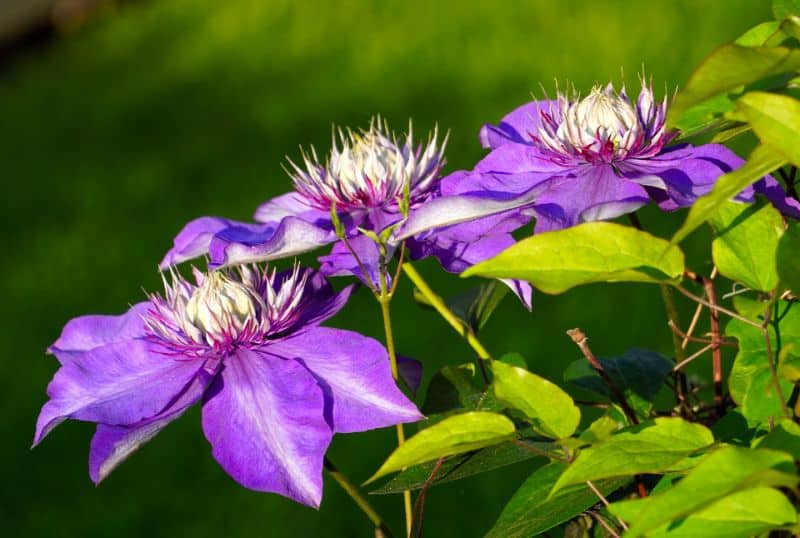
Clematis is a delightful climbing shrub known for its abundant and diverse flower forms, including stunning shades of purple. Although technically a vine, many clematis varieties can be managed as shrubs with proper training and support. Their flowers can vary significantly in size and shape, making them a versatile addition to any garden.
Clematis prefers a sunny location with some afternoon shade and well-drained soil, thriving when grown in conjunction with lower-growing plants. Their flowers typically bloom from spring into fall, providing prolonged interest throughout the growing season. Popular purple varieties include the ‘Jackmanii’ and ‘Romantica,’ both boasting abundant blooms that create a vibrant display and add vertical interest to your landscape.
Daphne Marianni

Daphne Marianni, or Winter Daphne, is cherished for its sweetly fragrant flowers that bloom in a beautiful shade of pale purple to lavender. This perennial shrub flourishes in early spring, enveloping the garden in a delightful scent that attracts bees and butterflies. Growing to about 3 feet tall, its compact size makes it an excellent choice for borders, rock gardens, or entryways.
This shrub prefers full sun to partial shade with well-drained soil that stays moist but is not waterlogged. While the Daphne flower is short-lived, typically lasting around two to three weeks, the lush green foliage remains attractive year-round, providing continuous interest. For gardeners seeking a sensory experience, the aromatic blooms of Daphne Marianni are simply irresistible.
Golden Dewdrop (Duranta erecta)

Golden Dewdrop, or Duranta erecta, is a vibrant purple flowering shrub that thrives in warm climates. Known for its cascading clusters of purple blooms and golden berries, this shrub not only attracts pollinators but also delights with its more unusual color combinations. It can grow anywhere from 2 to 10 feet tall, depending on the variety and local conditions.
Golden Dewdrop thrives in full sun and well-drained sandy soil, making it a great option for tropical or subtropical gardens. It can be easily shaped through pruning, lending itself to versatile landscaping uses, from hedges to specimen plants. The combination of purple flowers and golden berries adds a unique flair to your garden, making it visually intriguing year-round.
Heather

Heather, or Calluna vulgaris, offers an enchanting carpet of purple flowers during the late summer and fall months. This low-growing shrub creates an excellent ground cover and is an appealing choice for rock gardens, coastal landscapes, or high-altitude regions. Heather blooms in various shades of purple, from soft lilacs to deeper hues, creating a rich tapestry of color.
Heather prefers acidic, well-drained soil and full sun exposure, making it an ideal companion for other acid-loving plants like rhododendrons and azaleas. Its evergreen nature ensures that the garden remains lively even in the winter months. Beyond aesthetics, heather also serves as a valuable nectar source for bees and other pollinators, enhancing your garden’s ecological diversity.
Hebe
Hebe, a charming evergreen shrub, is known for its lush foliage and striking purple flowers that bloom in spring and summer. They typically reach heights between 1 to 4 feet, making them versatile for different garden settings. Commonly used as low hedges or container plants, Hebe can add year-round interest to your garden with its colorful blooms and unique foliage.
Hebe enjoys full sun to part shade and well-drained soil, thriving in milder climates. Its flowers, ranging from pale lilac to deep purple, attract various pollinators, making it an excellent choice for wildlife-friendly gardens. Their compact nature and low maintenance requirements further boost their appeal, providing beauty with minimal effort.
Hydrangea

Hydrangeas are some of the most beloved flowering shrubs, and among them, those with purple blooms truly steal the show. The Hydrangea macrophylla, or bigleaf hydrangea, is particularly prized for its ability to produce shades of lavender and purple depending on the soil pH. While the blossoms are usually round and pom-pom-like, the variations can add dynamic interest to the garden.
Hydrangeas thrive in part shade with well-drained, moisture-retentive soil. The ability to change flower color based on soil acidity provides an engaging gardening experience, giving you a chance to experiment and discover what tones suit your landscape best. With their large showy blooms, hydrangeas can serve as focal plants, balancing height with adjacent perennials or flowering shrubs.
Lavender
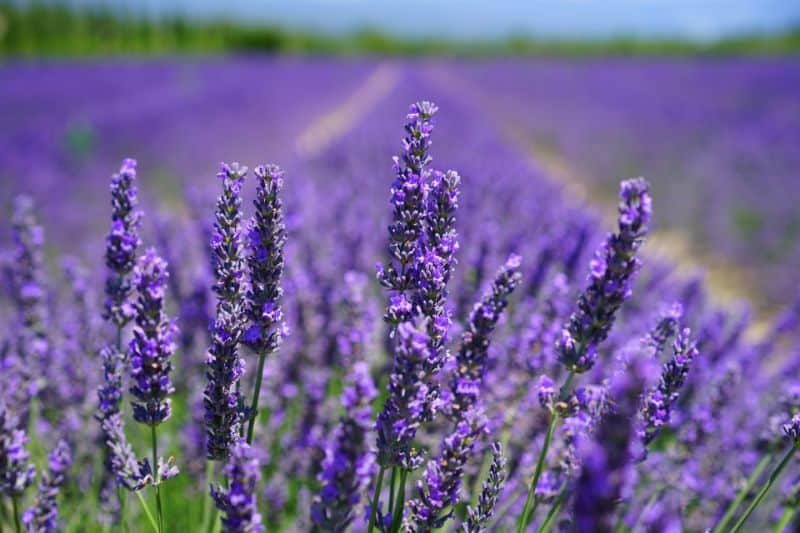
While often associated with aromatic herbs, lavender can also grow as an attractive flowering shrub offering companionship with vibrant purple visuals. Lavandula angustifolia, or English lavender, brings both beauty and fragrance to the garden. Its tall spikes of purple flowers bloom in mid to late summer, attracting bees and butterflies while providing a calming scent for your outdoor space.
Lavender prefers full sun and thrives in well-draining, sandy soil, making it an excellent choice for sunny borders and cottage gardens. The flexible non-woody habit of lavender shrubs allows for easy pruning and shaping to maintain size and shape. Beyond ornamental use, lavender also has culinary and therapeutic benefits, serving as a timeless favorite among gardeners for its beauty and fragrance.
Leptodermis
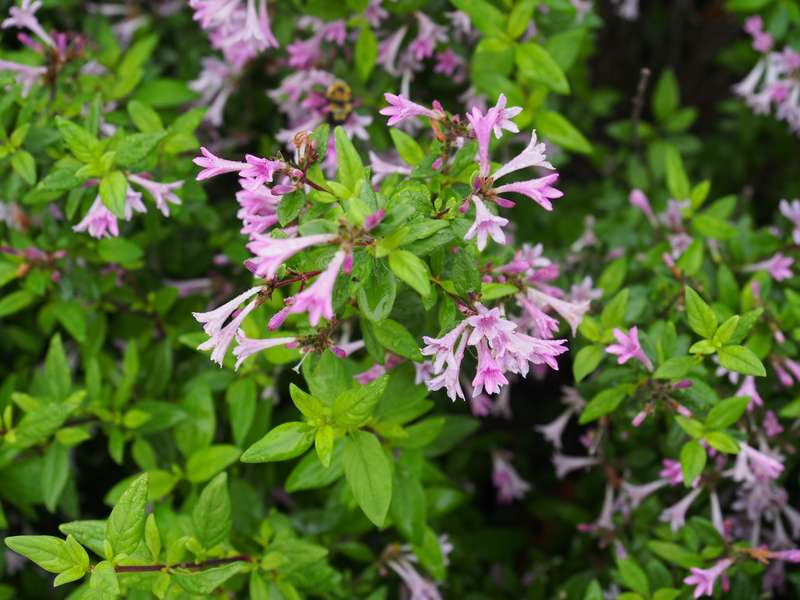
Leptodermis, or Leptodermis oblonga, is a charming shrub known for its striking lavender-purple flowers that bloom in late spring. This shrub typically grows to about 3-4 feet tall and is characterized by its arching branches. The flowers appear in small clusters, creating an eye-catching display while attracting various pollinators.
This shrub prefers well-drained soil and full sun, making it suitable for borders and various garden styles. Its unique foliage and flower structure lend it a distinct look, making it a wonderful option for gardeners looking to add diversity to their plant palette. Leptodermis can be an excellent choice for drought-prone areas, showcasing resilience and beauty in challenging conditions.
Lilac
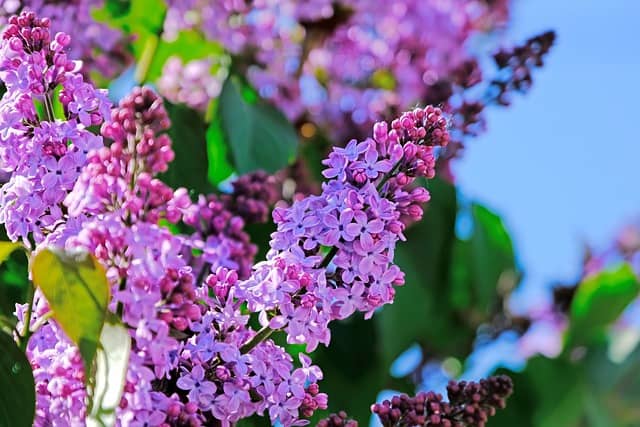
Lilacs are cherished for their intoxicating fragrance and beautiful clusters of purple flowers that signal the arrival of spring. The Syringa vulgaris or common lilac, along with its various cultivars, produces abundant blooms that range in color from pale lavender to deep violet. These deciduous shrubs can grow between 5 to 15 feet tall, making them perfect as specimens or informal hedges.
Lilacs prefer full sun and well-drained soil, flourishing in various garden styles from traditional to cottage gardens. Regular pruning helps maintain their shape and encourages continued blooming year after year. Their aromatic flowers not only beautify the garden but also fill the air with their sweet scent, creating a truly enchanting atmosphere during the blooming season.
Magnolia ‘Anne’
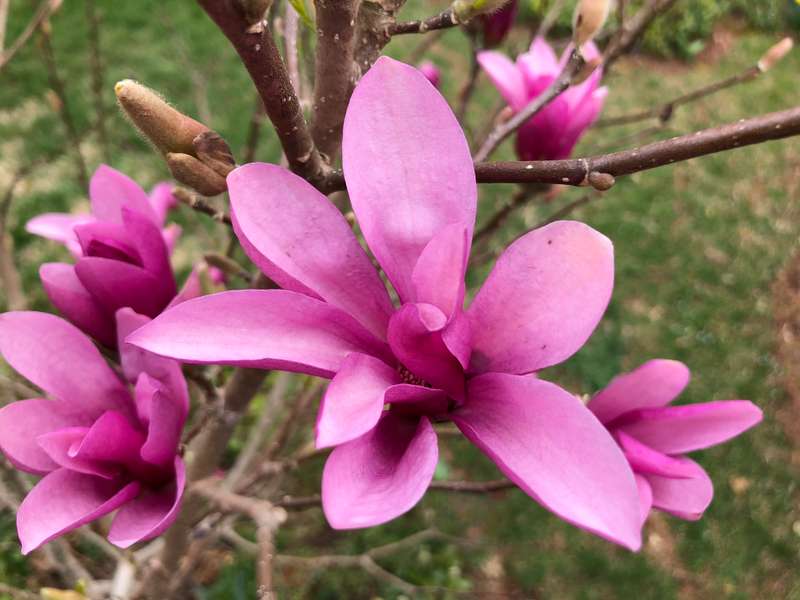
Magnolia ‘Anne’ is a spectacular hybrid shrub notable for its stunning purple flowers that appear in the spring. The flowers, shaped like tulips, boast a deep, rich purple color that stands in sharp contrast to its dark green leaves, creating an eye-catching display. This compact shrub typically reaches heights of about 5 to 7 feet, making it suitable for small gardens or as a focal point in larger landscapes.
This shrub prefers full sun to partial shade and well-drained acidic soil. As an early bloomer, Magnolia ‘Anne’ casts a spell over the garden with its beautiful petals long before many other plants awaken from winter dormancy. Its distinctive flowers and growth habit make it a cherished addition to any landscape.
Paperflower or Bougainvillea

Bougainvillea is renowned for its vibrant papery bracts that transform your garden into a colorful paradise. While typically known for its showy colors in shades of pink, fuchsia, and orange, there are purple varieties that add a unique flair. This tropical vine can be trained as a shrub, offering a magnificent display of color throughout the growing season, especially in warm climates.
Bougainvillea thrives in full sunlight and prefers well-drained soil with minimal fertilization to produce its best colors. The arrangement of bracts around the actual flower creates a unique and dramatic appearance that attracts pollinators while providing an exotic touch to the garden. Whether used as a hedge, a climbing plant on trellises, or a cascading beauty in pots, bougainvillea unfailingly adds warmth and vibrancy wherever it’s planted.
Rhododendron
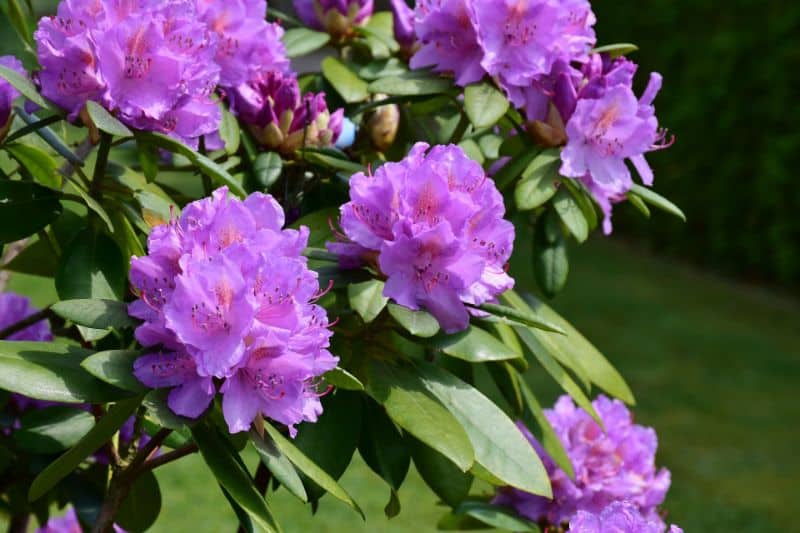
Rhododendrons, closely related to azaleas, offer stunning purple flowers during their blooming period in spring. With a variety of sizes and flower forms, these evergreen shrubs are excellent for creating lush landscapes. The large, leathery leaves provide both texture and contrast when not in bloom.
These shrubs thrive in acidic, well-drained soil and partial shade, making them ideal for woodland gardens or areas with filtered sunlight. Rhododendrons can bloom for several weeks, casting a vibrant array of colors—often enriching gardens with deep purples and lavender shades. Their presence contributes to beautiful vistas and can serve as a backdrop to lower-growing perennials or flowering plants.
Rose
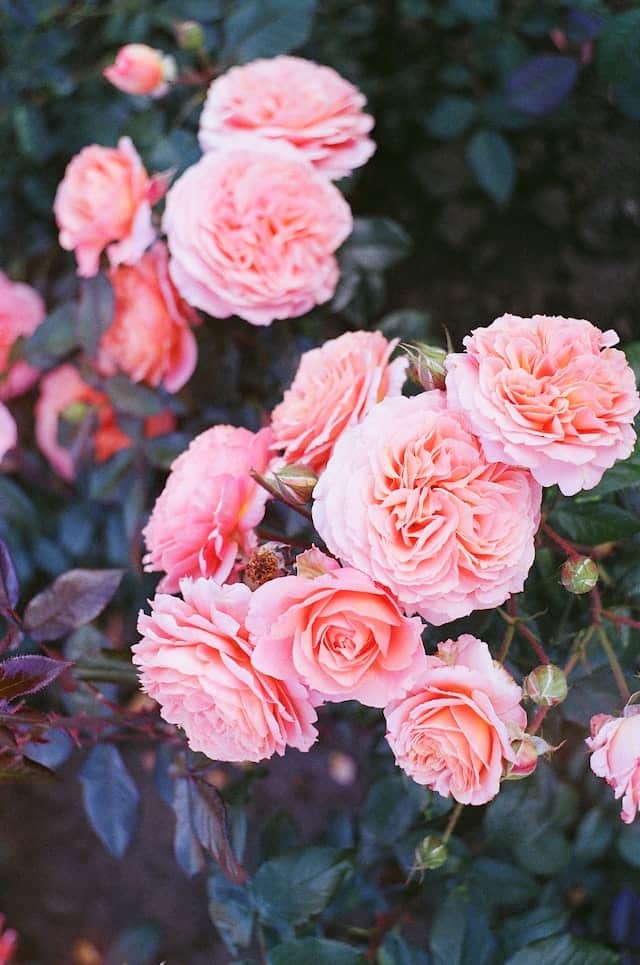
Though often celebrated for their romantic appeal, roses also come in shades of purple that can create a beautiful focal point in any garden. From deep plum to soft lavender, hybrid roses such as the ‘Nathan Hale’ or ‘Blue Moon’ provide elegance and beauty. They bloom profusely from spring through fall, attracting butterflies and adding fragrance to the outdoor space.
Roses prefer full sun and well-drained soil while benefiting from regular pruning and care. Their versatility allows them to fit seamlessly into various garden styles, whether in formal hedges, cottage gardens, or as stand-alone specimens. With a little effort in cultivation, purple roses can create a stunning visual effect that delights all who experience them.
Purple Rose of Sharon
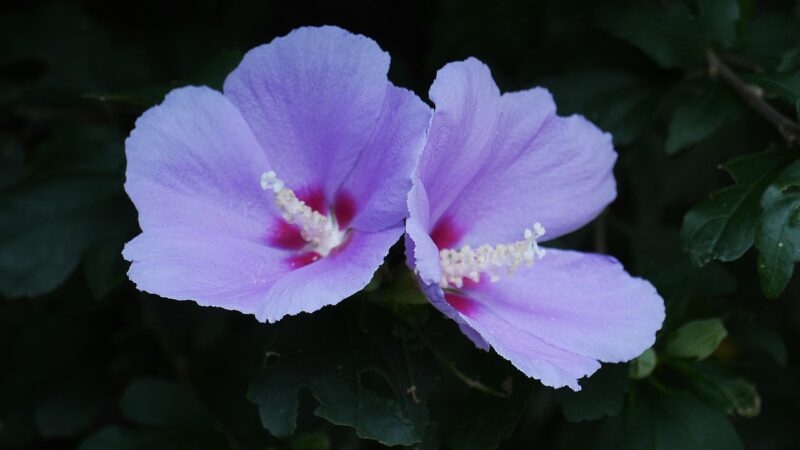
The Rose of Sharon (Hibiscus syriacus) is a deciduous shrub that boasts a profusion of showy flowers, including beautiful purple and lavender varieties. Blooming in late summer, these flowers resemble colorful hibiscus and add a vibrant touch to gardens when many other plants have stopped flowering. This versatile shrub can reach heights of 8 to 12 feet, offering a dramatic statement or providing privacy as a hedge.
Rose of Sharon thrives in full sun and moderately fertile soil, making it a low-maintenance choice for gardeners. Its ability to tolerate drought makes it an adaptable option for various climates. Beyond visual allure, it serves as an important nectar source for pollinators, promoting biodiversity in your garden.
Tea Rose
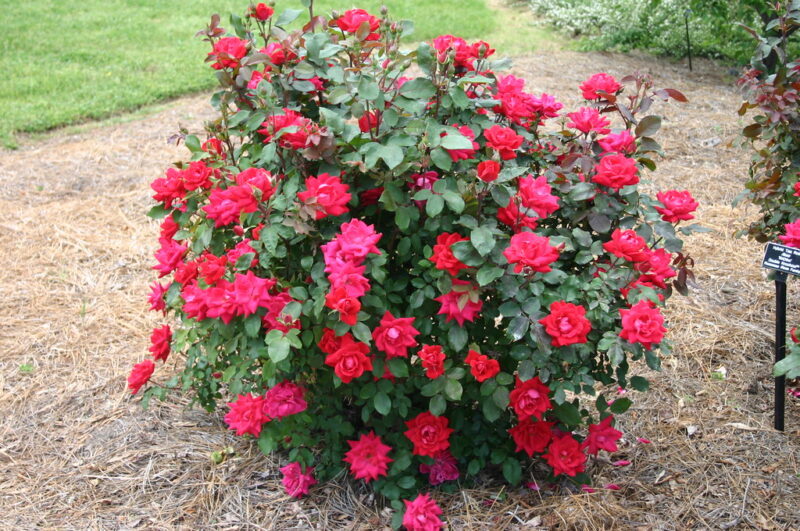
Tea Roses are celebrated for their classic beauty and fragrant blooms, often found in shades of lavender and purple. Varieties like ‘Lavender Dream’ showcase large blossoms that provide a symbol of elegance wherever they are planted. These perennial shrubs bloom throughout the summer, providing bursts of color and delightful fragrance.
Tea Roses prefer full sun and need well-drained, fertile soil. Regular deadheading stimulates continued blooms and keeps the foliage lush. Their romantic appeal makes them an essential choice for gardens seeking charm and character, from formal rose beds to cottage gardens, where they can create delightful combinations with other colorful flowers.
Weigela
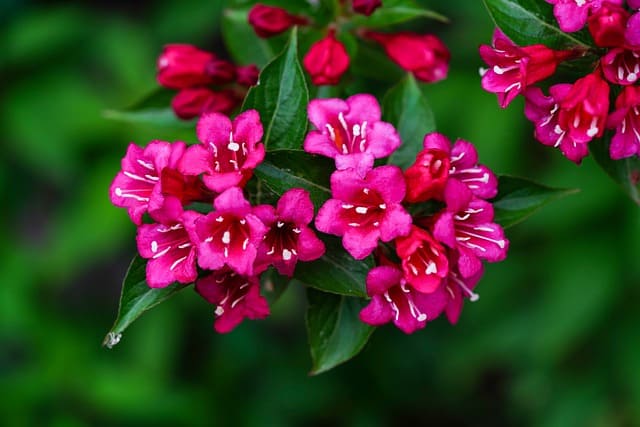
Weigela is an underappreciated gem in the flowering shrub world, producing trumpet-shaped flowers in shades of lavender and purple throughout late spring and early summer. This deciduous shrub grows to about 3 to 5 feet tall, making it an excellent choice for borders or mixed beds. Its arching branches and lush green foliage provide texture, while the vibrant flowers attract hummingbirds and butterflies.
Weigela thrives in well-drained soil under full sun or partial shade. Known for its adaptability, it tolerates various soil types and conditions. Popular varieties, such as ‘Wine and Roses,’ boast striking purple flowers that cascade down the branches, adding an eye-catching element to any garden. Their delightful blooms and easy-going nature make them a favorite choice for gardeners looking to achieve color and charisma.


